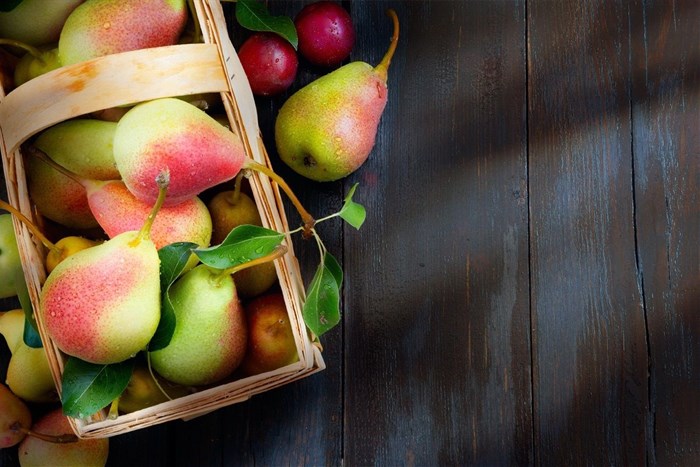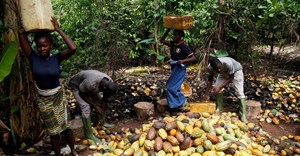Could Zambia stimulate fresh produce trade in Africa?

In his presentation on the state and potential of the fresh produce sector in Zambia during the recent Produce Marketing Association’s (PMA’s), Fresh Connections: Southern Africa Conference and Trade Show held in Pretoria, Hamusimbi shared the outcome of a recent study about the horticultural sector in Zambia that was commissioned by Musika and the IAPRI. The study assessed the viability of investments in modern fresh produce markets.
Zambia’s horticultural sector is rapidly growing
In Zambia, annual consumption is estimated at over one million metric ton (MT) worth more than $330m. Consumption is expected to increase to 1,4 million metric tonne with a worth of some $0,5bn by 2020.
Production in Zambia is currently at over 1,4 million metric tonne ($235m) and expected to increase to 2,2 million tonne by 2020. Net fresh fruit and vegetable farm sales on the local market is just under one million metric tonne, worth more than $200m. Furthermore, it is expected that net farm sales for the sector will increase by an astonishing 50% in 2020.
Mass market exists for fruit and eggs
The study shows that the prospects for the fresh fruit and vegetable sector remain confident in Zambia. The population growth is at 2,8% and will almost double by 2035. Urbanisation is changing rapidly from an estimated 4% annually and is expected to increase by 121% and an estimated 12,4 million people living in urban Zambia by 2035.
Interestingly, low-income households doubled expenditure on fresh fruit and vegetables (14-32%). This segment of the market now spends 25 ngwees of every K-1 spent on food buying fresh fruit and vegetables. The medium income and wealthier households have increased their fresh fruit and vegetable consumption by 11% and 5% respectively.
According to the study, consumption is also expected to increase due to the rising healthy-eating momentum among higher per capita households.
Challenges of open-air markets disrupt growth
Hamusimbi warns that while the fresh fruit and vegetable sector is growing, opportunity to reach its full potential is hampered by the "unregulated, non-transparent and uncompetitive informal open-air markets." Supply inconsistencies are high and the unpredictability and quality of fresh produce volumes result in high price volatility. It is estimated that 43% of imported fresh fruit and vegetables can actually be produced locally.
According to Hamusimbi, the sometimes-unhygienic trading conditions at fresh fruit and vegetable markets turn these into potential "disease hubs" and raise food safety concerns.
Another hurdle to cross is huge post-harvest losses. "Sometimes it goes up to 30%. Limited cold chain facilities and chaotic marketing systems hamper the feeding of more people and the stabilisation of prices," says Hamusimbi.
However, these challenges create vast opportunities for private investors globally and also in South Africa, he says.
Under-exploited export potential
"Zambia is an ideal gateway to provide supply stability for fresh produce in the region," says Hamusimbi. During his presentation, he called attention to the under-exploited fresh fruit produce export potential from Zambia into the Democratic Republic of the Congo, Angola (second in GDP from SA), the Great Lakes and the rest of COMESA – the trade block known as the Common Market for Eastern and Southern Africa. It is a free trade area with twenty-one-member states stretching from Egypt to Swaziland. He says the eastern part of Angola is best accessed from Zambia.
"In addition to a growing population, urbanisation and changing consumption trends, Zambia’s fresh fruit and vegetable production potential are under-utilised. Over 50% of water resources are located in the southern half of Africa, of which over 40% is in Zambia," explains Hamusimbi.
Zambia’s largest and fastest developing city is the capital, Lusaka. The city’s informal sprawling open-air markets annually facilitate 572,000 metric ton of fresh fruit and vegetables.
"An investment into a modern fresh fruit and vegetable market will be able to attract 300,000 metric tonne within the short term. Such an investment could operate profitably with the ability to comfortably meet its loan repayments. The transparent and efficient wholesaling of meat, fish and eggs and other products and, value addition are other possible income streams," says Hamusimbi.
Investment climate in Zambia
According to Hamusimbi, Zambia is pushing boundaries to create an attractive investment environment. Zambia boasts a range of supportive policies and investment environment, adequate legal corpus, and a conducive environment to support the planned investments in modern Zambian fresh fruit and vegetable markets.
"There is room for new markets to define other rules within our existing legislative and regulatory environment. Policies in Zambia are focused on fostering transparent and secure trade for its market players," says Hamusimbi.
"The transformation of fresh produce markets can lead to greater wealth creation in rural Zambia. The fresh produce facility modelled now in Lusaka include employment opportunities of up to 500 direct jobs and over 1,500 indirect jobs to be created by one market. This excludes the over 10,000 marketers expected to be the main buyers out the planned market."
This can also mean increased revenue to public bodies and new formal wholesale markets can assist fresh produce exporters/importers to make use of back loads. Investments into new fresh fruit and vegetable markets can stimulate exports.
Hamusimbi stresses the fact that these markets can act as a re-export hub for supply to Zambia’s neighbours. He is confident that Zambia can play a significant role in the fresh fruit markets and industry in Southern Africa.
Sales commission model best for Zambia
The study results indicate that the RSA’s sales commission-based model was found most appropriate for Zambia. The model is aimed at protecting all players, stimulates competition, transparency, efficiency and security of all transactions.
The model facilitates predefined commissions for regulated agents and market authority and helps provide the much-needed modern trading infrastructure and software.
According to Hamusimbi, local interests in investing in modern fresh produce markets have been established and they are working at facilitating private sector investments into modern fresh produce wholesale markets and seeking international investors and operators to help.
A clear message about fresh produce markets in Africa – fresh produce markets are on the verge of a golden era on an economic and socio-economic level and to realise trade flow in the region provided that they attract sufficient investment and are managed efficiently.
RSA sales commission model
The RSA Group based in South Africa, has grown from a single agency on the Johannesburg fresh produce market to a company that owns market agencies in all major markets (Bloemfontein, Cape Town, Durban, Johannesburg, Pretoria and Springs) and two regional markets at Mooketsi and Polokwane.
Presenting alongside Hamusimbi, Jaco Oosthuizen, RSA Group chief executive officer says fresh produce marketers are moving into an era of greater collaboration between industry stakeholders. "Your market is not South Africa anymore – your market is Africa."
"To drive consumption in fresh produce, you need an efficient centralised market system. The underlying principles for growing demand include a free market, producer brand and brand identity. Markets are central to bringing produce to the people. In a centralised market system, price is driven by forces of supply and demand. Every single grower and buyer are known and every single transaction is captured and reported back to source every single day. From a production perspective, it also stabilises producer income."
RSA’s producer support base encourages them to look at other national and regional marketing channels, where they can add value to their marketing strategies through state-of-the-art information technology. By linking these markets electronically, RSA is in the unique position to supply real-time sales and accounting information on produce sold and to effect instant electronic payments. This intensive use of information puts the RSA Group in a position to deliver high levels of transparency to growers. Information technology allows RSA management and traders to monitor, measure and analyse sales performances.
According to Oosthuizen, the central market system in South Africa is still the single biggest marketing channel in South Africa. He believes the central market system is the ideal opportunity for growers to compete regionally and globally.
Related
SOLshop aims to empower SA's food producers with direct market access 20 Mar 2025 #BizTrends2025: Adapting agriculture - key trends and strategies for a sustainable future 21 Jan 2025 Inquiry makes recommendations to improve competition in fresh produce market 14 Jan 2025 Stricter EU environmental rules to affect SA agri exports 6 Jan 2025 IFPA’s Southern Africa Conference to address key issues for fresh produce industry 23 Jul 2024 Competition watchdog finds price mark-ups, barriers in SA's fresh produce market 19 Jun 2024























